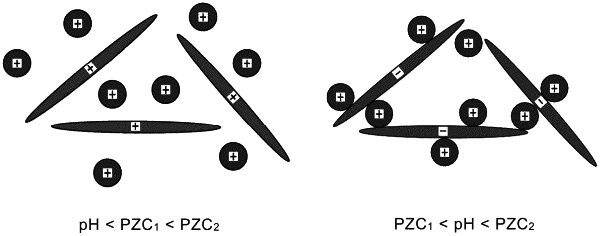| CPC C08L 1/02 (2013.01) [C08K 3/22 (2013.01); C08K 9/00 (2013.01); B82Y 40/00 (2013.01); C08K 2003/2241 (2013.01)] | 17 Claims |

|
1. A method for controlling a rheological characteristic of a non-Newtonian material, the method comprising:
combining a first particle with a first suspension to form a second suspension, the first suspension comprising the non-Newtonian material, the first suspension comprising a second particle, the first particle having a first point of zero charge and the second particle having a second, different point of zero charge; and
adjusting a pH of the first suspension or the second suspension such that the pH of the second suspension is greater than the first point of zero charge and the second point of zero charge or such that the pH of the second suspension is less than the first point of zero charge and the second point of zero charge, wherein
upon the pH adjustment, the second suspension exhibits a change in shear-thinning behavior as compared to the shear-thinning behavior of the non-Newtonian material.
|